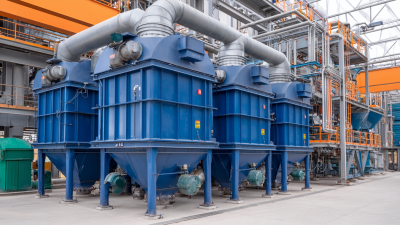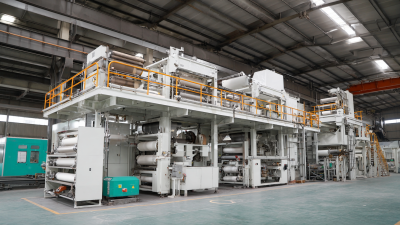How to Choose the Right Wood Pulp for Your Paper Production Needs
 Choosing the right wood pulp for your paper production needs is a critical step that can significantly influence both the quality of the final product and the efficiency of the manufacturing process. With various types of wood pulp available, including bleached and unbleached options, understanding their unique properties and applications is essential for paper manufacturers. This guide will explore the fundamental aspects of wood pulp selection, including fiber content, strength, brightness, and environmental considerations. By aligning the characteristics of wood pulp with your specific production requirements, you can optimize your operations and enhance the performance of your paper products. Whether you are producing newsprint, packaging materials, or fine writing paper, making informed decisions about wood pulp will pave the way for successful outcomes in your paper manufacturing journey.
Choosing the right wood pulp for your paper production needs is a critical step that can significantly influence both the quality of the final product and the efficiency of the manufacturing process. With various types of wood pulp available, including bleached and unbleached options, understanding their unique properties and applications is essential for paper manufacturers. This guide will explore the fundamental aspects of wood pulp selection, including fiber content, strength, brightness, and environmental considerations. By aligning the characteristics of wood pulp with your specific production requirements, you can optimize your operations and enhance the performance of your paper products. Whether you are producing newsprint, packaging materials, or fine writing paper, making informed decisions about wood pulp will pave the way for successful outcomes in your paper manufacturing journey.
Understanding Different Types of Wood Pulp: A Comparative Overview
When it comes to selecting the right wood pulp for your paper production needs, understanding the different types is paramount. Wood pulp primarily falls into two categories: mechanical pulp and chemical pulp. Mechanical pulp is produced by physically grinding wood chips into fibers, resulting in a product that retains more lignin and provides higher yield. This type of pulp is ideal for newsprint and some types of paper where brightness and durability are not critical.

On the other hand, chemical pulp is made through processes that dissolve lignin, separating the cellulose fibers more effectively. This leads to higher-quality pulp that is brighter and stronger, making it suitable for fine paper products and packaging. Within the chemical pulp category, there are subtypes such as kraft pulp and sulfite pulp, each offering distinct characteristics that cater to specific paper grades. Understanding these differences allows manufacturers to make informed decisions that align with their product requirements and sustainability goals.
Assessing the Impact of Pulp Source on Paper Quality and Characteristics
When selecting wood pulp for paper production, understanding the impact of its source on paper quality and characteristics is vital. Different types of wood pulp, depending on their origin—whether from softwood or hardwood—can significantly affect the paper's strength, texture, and printability. For instance, softwood pulp, known for its long fibers, often results in stronger paper, making it ideal for products like corrugated containers and newsprint. In contrast, hardwood pulp, with its shorter fibers, produces a smoother finish, catering to high-quality printing applications like magazine covers or fine stationery.
Tip: Always consider the end-use of the paper when choosing your pulp source. A study by the Pulp and Paper Technical Association highlights that the choice between hardwood and softwood can lead to variations in tear strength by up to 30%.
Moreover, sustainability is increasingly important in pulp sourcing. Reports indicate that papers made from responsibly sourced pulp not only meet consumer preferences but also achieve higher market value. As reported by the Forest Stewardship Council, sustainably harvested pulp can enhance a brand's reputation and reduce environmental impact by 25% compared to conventional sources.
Tip: Look for certification labels such as FSC or PEFC to ensure your wood pulp meets eco-friendly standards while still providing the desired quality properties.

Evaluating Cost vs. Quality: Selecting the Most Economical Wood Pulp
When it comes to paper production, selecting the right wood pulp involves balancing cost against quality. According to a report by Smithers Pira, the global demand for paper and paper products is expected to reach 500 million tonnes by 2025, making sustainable and cost-efficient sourcing of wood pulp more critical than ever. Manufacturers must assess not only the immediate price of wood pulp but also its long-term impact on product quality and performance. For instance, bleached hardwood pulp, while often more expensive, offers superior brightness and strength, essential for high-end printing applications, whereas mechanical pulp can provide a budget-friendly alternative for lower-grade products.
In evaluating options, it's important to consider the total cost of ownership rather than just the upfront pricing. The Fiber Society's latest study reveals that using higher quality wood pulp can reduce production waste by up to 20%, translating into significant savings over time. Additionally, incorporating recycled wood pulp can further lower costs while supporting sustainability goals. Adopting a strategic approach to sourcing wood pulp, where cost and quality are carefully weighed, is essential for ensuring competitive advantage in the paper production market.
How to Choose the Right Wood Pulp for Your Paper Production Needs
| Pulp Type | Cost per Ton (USD) | Fiber Quality (1-10) | Yield (%) | Best Use |
|---|---|---|---|---|
| Bleached Kraft | $800 | 9 | 45 | High-Quality Paper |
| Unbleached Kraft | $600 | 8 | 50 | Packaging |
| Recycled Pulp | $450 | 6 | 55 | Newsprint |
| Groundwood Pulp | $350 | 5 | 60 | Low-End Products |
| Dissolving Pulp | $950 | 10 | 40 | Specialty Paper |
Environmental Considerations: Sustainable Sourcing of Wood Pulp
When selecting wood pulp for paper production, it’s essential to prioritize sustainable sourcing to mitigate environmental impacts. As recent analyses have highlighted, many leading timber companies are lagging in their environmental, social, and governance (ESG) reporting. This lack of transparency can obscure the true sustainability of their operations and influence the ethical choices of companies relying on these resources. Choosing suppliers that are diligent in their reporting and practices can help ensure that the wood pulp used is sourced responsibly, thereby supporting the health of forests and ecosystems.
Moreover, the rising concerns around greenwashing emphasize the need for vigilance when evaluating sources of wood pulp. Companies may portray their sustainability efforts as more robust than they actually are, which can mislead consumers and businesses alike. Engaging with suppliers who are certified by recognized standards and partnerships focused on forest stewardship is a prudent strategy. Consumers are becoming increasingly aware of the influence of their purchasing decisions on environmental outcomes, making it even more crucial for paper producers to align with sustainable sourcing principles. By doing so, they can not only foster a healthier planet but also resonate with the growing demand for environmentally responsible products.
Exploring Specialized Pulp Types: How They Fit Specific Paper Production Needs
When selecting the right wood pulp for paper production, understanding the different types available is crucial. Specialized pulp types, such as kraft, dissolving, and mechanical pulps, cater to specific production needs. According to a report by Smithers Pira, the global market for wood pulp is expected to reach $63 billion by 2025, driven largely by demand for high-quality specialty papers. Kraft pulp, known for its strength and durability, is ideal for producing packaging materials and high-grade paper products, while dissolving pulp is essential in the textile and chemical industries.
Tips: When sourcing wood pulp, consider the intended end product. For high-quality printing and writing papers, opt for refined bleached kraft pulp, as its brightness and strength enhance printability. On the other hand, if your focus is on eco-friendly paper solutions, mechanical pulps made from sustainable sources can provide an alternative without compromising quality. Additionally, always check for certifications such as FSC or PEFC to ensure responsible sourcing and compliance with environmental standards.
The right pulp can significantly influence the paper's final characteristics, including its texture, strength, and environmental impact. By aligning your pulp choice with the specific requirements of your production process, you can optimize both quality and sustainability.
Related Posts
-

7 Reasons Why Bag Filter Systems are Essential for Reducing Industrial Emissions
-

Emerging Trends in Best Pulp Industries to Watch for Global Buyers in 2025
-

Exploring Alternatives to Best Microfiltration Membrane Technology for Enhanced Water Purification
-

Ultimate Guide to Choosing the Right Bagasse Plate Making Machine for Your Business
-

Ultimate Guide to Navigating Challenges in the Paper Industry: Best Practices and Solutions
-

Ultimate Guide to Mastering Cross Flow Filtration Systems for Enhanced Efficiency